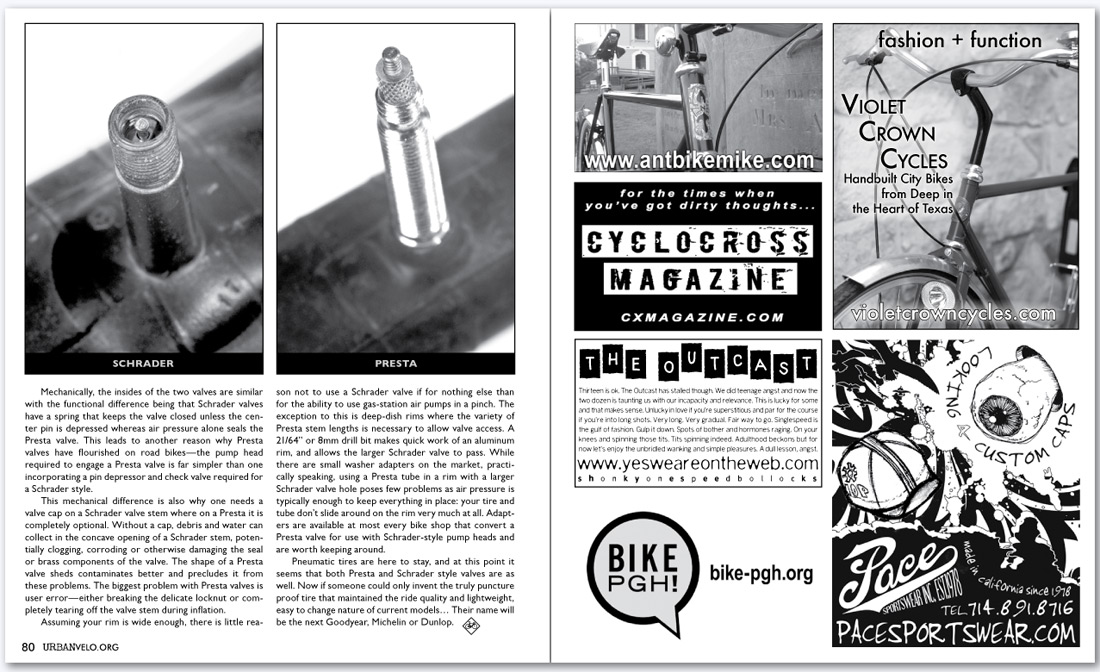
|
|||
Mechanically, the insides of the two valves are similar with the functional difference being that Schrader valves have a spring that keeps the valve closed unless the center pin is depressed whereas air pressure alone seals the Presta valve. This leads to another reason why Presta valves have flourished on road bikes—the pump head required to engage a Presta valve is far simpler than one incorporating a pin depressor and check valve required for a Schrader style. This mechanical difference is also why one needs a valve cap on a Schrader valve stem where on a Presta it is completely optional. Without a cap, debris and water can collect in the concave opening of a Schrader stem, potentially clogging, corroding or otherwise damaging the seal or brass components of the valve. The shape of a Presta valve sheds contaminates better and precludes it from these problems. The biggest problem with Presta valves is user error—either breaking the delicate locknut or completely tearing off the valve stem during inflation. Assuming your rim is wide enough, there is little reason not to use a Schrader valve if for nothing else than for the ability to use gas-station air pumps in a pinch. The exception to this is deep-dish rims where the variety of Presta stem lengths is necessary to allow valve access. A 21/64” or 8mm drill bit makes quick work of an aluminum rim, and allows the larger Schrader valve to pass. While there are small washer adapters on the market, practically speaking, using a Presta tube in a rim with a larger Schrader valve hole poses few problems as air pressure is typically enough to keep everything in place: your tire and tube don’t slide around on the rim very much at all. Adapters are available at most every bike shop that convert a Presta valve for use with Schrader-style pump heads and are worth keeping around. Pneumatic tires are here to stay, and at this point it seems that both Presta and Schrader style valves are as well. Now if someone could only invent the truly puncture proof tire that maintained the ride quality and lightweight, easy to change nature of current models… Their name will be the next Goodyear, Michelin or Dunlop.
|
|
|